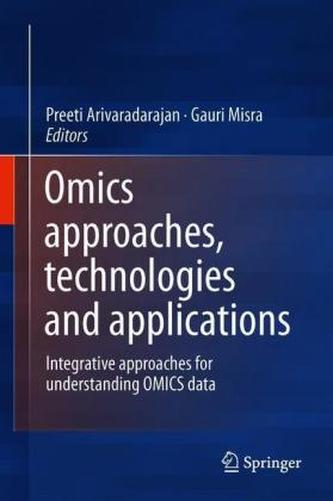Omics approaches, technologies and applications
7
%
4343 Kč 4 674 Kč
Expedujeme 1 až 2 dny
Sleva až 70% u třetiny knih
Chapter 1. Introduction to omics .- Chapter 1.1. Background.- Chapter 1.2. Overview of omics.- Chapter 1.3. Overview of systems biology.- Chapter 1.4. Application of R language in omics analysis.- Chapter 2. Genomics .- Chapter 2.1. Introduction .- Chapter 2.2. The Human Genome Project .- Chapter 2.2.1. Mapping of the human genome.- Chapter 2.2.2. DNA sequencing .- Chapter 2.2.3. Genome Annotation .- Chapter 2.2.4. Genomic databases .- Chapter 2.3. Genomic variations .- Chapter 2.4. Functional Genomics.- Chapter 2.4.1. The ENCODE project.- Chapter 2.4.2. Gene expression profiling (DNA microarrays) .- Chapter 2.5. The Non-coding Genome .- Chapter 2.6. Comparative genomics.- Chapter 2.7. Epigenome and Epigenetics .- Chapter 2.7.1. DNA methylation .- Chapter 2.7.2. Histone modifications .- Chapter 2.7.3. Non-coding RNAs .- Chapter 2.7.4. Epigenetic mechanisms (X chromosome inactivation, Genomic imprinting) .- Chapter 2.8. Genomic methods for studying complex diseases .- Chapter 2.8.1. GWAS.- Chapter 2.8.2. Next Generation Sequencing .- Chapter 2.8.3. Chromatin immunoprecipitation (ChIP) .- Chapter 2.8.4. Clinical genomics .- Chapter 3. Transcriptomics .- Chapter 3.1. RNA to transcriptome .- Chapter 3.1.1. Transcriptome and Transcriptomics .- Chapter 3.1.2. Principles of Transcriptomics .- Chapter 3.1.3. Technological approach to study Transcriptomes .- Chapter 3.1.3.1. Serial/Cap analysis of gene expression .- Chapter 3.1.3.2. Expression Sequence Tag .- Chapter 3.1.3.3. Microarray .- Chapter 3.1.3.4. RNA-seq .- Chapter 3.2. Metatranscriptome .- Chapter 3.2.1. Gene activity diversity .- Chapter 3.2.2. Gene expression analysis .- Chapter 3.3. Applications .- Chapter 3.3.1. Disease profiling .- Chapter 3.3.2. Ecology .- Chapter 3.3.3. Evolution .- Chapter 3.3.4. Gene function annotation .- Chapter 4. Proteomics .- Chapter 4.1. Protein to proteome .- Chapter 4.1.1. Proteome and Proteomics .- Chapter 4.1.2. Principles of Proteomics .- Chapter 4.1.3. Technological approach to study Proteomes .- Chapter 4.1.3.1. Mass spectrometry .- Chapter 4.1.3.2. Peptide Mass Fingerprinting .- Chapter 4.2. Metaproteome .- Chapter 4.2.1. Protein activity diversity .- Chapter 4.2.2. Protein expression analysis .- Chapter 4.3. Applications .- Chapter 4.3.1. Biomarker discovery .- Chapter 4.3.2. Lead identification .- Chapter 4.3.3. Mapping interaction network .- Chapter 5. Metabolomics. - Chapter 5.1. Metabolites to metabolome .- Chapter 5.2. Data Resources for Metabolomics.- Chapter 5.2.1. EMBL-EBI .- Chapter 5.2.2. BRENDA .- Chapter 5.2.3. HMDD .- Chapter 5.2.4. Sabio RK .- Chapter 5.3. Computational approaches for Metabolomics analysis .- Chapter 5.3.1. Network analysis metabolic pathway integration .- Chapter 5.3.2. Flux analysis .- Chapter 5.4. Applications .- Chapter 6. Microbiome .- Chapter 6.1. Microbe to Microbiome .- Chapter 6.1.1. Soil Microbiome.- Chapter 6.1.2. Plant Microbiome .- Chapter 6.1.3. Marine Microbiome .- Chapter 6.1.4. Human Microbiome .- Chapter 6.2. Host-microbiome interactions .- Chapter 6.2.1. Bacteriome .- Chapter 6.2.2. Mycobiome. .- Chapter 6.2.3. Virome .- Chapter 6.3. Microbiome in health and disease .- Chapter 6.4. Shaping the microbiome .- Chapter 6.5. Sequencing technologies for studying microbiome.- Chapter 6.5.1. 454 .- Chapter 6.5.2 .Illumina .- Chapter 6.5.3. SOLiD .- Chapter 6.5.4. Ion Torrent .- Chapter 6.5.5. PacBio .- Chapter 6.6. Future perspectives .- Chapter 6.6.1. Prebiotics .- Chapter 6.6.2. Personalized Medicine .- Chapter 7. Bioinformatics resources .- Chapter 7.1. Bioinformatics approaches in Genomics .- Chapter 7.1.1. Structural genomics .- Chapter 7.1.1.1. Genome sequence assembly .- Chapter 7.1.1.2. Genome annotation .- Chapter 7.1.1.3. Comparative genomics .- Chapter 7.1.2. Functional genomics .- Chapter 7.1.2.1. Sequence-based approaches .- Chapter 7.1.2.2. Microarray-based approaches .- Chapter 7.2. Bioinformatics approaches in Proteomics.- Chapter 7.2.1. Protein expression analysis .- Chapter 7
| Autor: | Arivaradarajan, Preeti |
| Nakladatel: | Springer, Berlin |
| Rok vydání: | 2019 |
| Jazyk : | Angličtina |
| Vazba: | Hardback |
Mohlo by se vám také líbit..
-

Gefäßpflanzen: Atlasband
Jäger, Eckehart J.
-

Pflanzenphysiologie
Schopfer, Peter
-
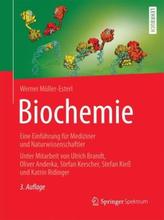
Biochemie
Müller-Esterl, Werner
-
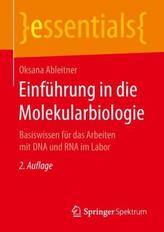
Einführung in die Molekularbiologie
Ableitner, Oksana
-

Häufige tropische und subtropische Zi...
Kreissig, Katharina
-

Vegetation der Erde
Pfadenhauer, Jörg S.
-
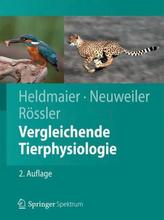
Vergleichende Tierphysiologie
Heldmaier, Gerhard
-

Der Superorganismus
Hölldobler, Bert
-

Romeis Mikroskopische Technik
Mulisch, Maria
-

Morphologie der Großpilze
Dörfelt, Heinrich
-

Faszination Pflanzen
Lüttge, Ulrich
-

Anthropologie
Grupe, Gisela
-
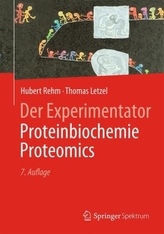
Proteinbiochemie / Proteomics
Rehm, Hubert
-

Armleuchteralgen
-

Mikroskopischer Farbatlas pflanzliche...
Rahfeld, Bettina
-

Gehölze im Winter
Eschrich, Walter




